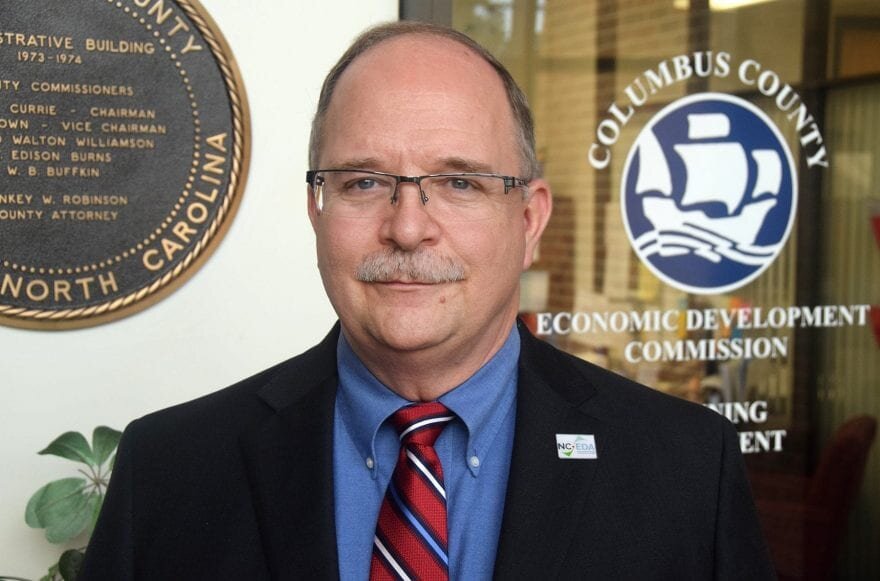By: Ivey Schofield, The News Reporter
Columbus County met all of its workforce readiness goals for 2020 set by the state, becoming the only “Work Ready” community in the region, according to Gary Lanier, director of the Columbus County Economic Development Commission.
These goals were the number of national career readiness certificates for high school and college students, workers currently in private and public businesses, and residents transitioning to a different career.
Gary Lanier, director of the Columbus County Economic Development Commission
“Some of them we have pretty much blown out of the water, especially ones related to our school system,” Lanier said.
Within the emerging workforce (high school and college students), the goal was 188 certificates. The county got 1,351.
In other areas, the goal for current workers within private and public businesses was 29, with 184 as the actual total by 2020. In addition, the goal for transitioning residents (those who are unemployed, recent veterans or attending adult education) was 57, with 61 as the final total.
Lanier argued that the transitioning sector was “always tough” to improve. “A lot of our local businesses and industries were not really aware and are not really aware of what an ACT Work Keys certification is,” he said. “We actually had to reach out and start calling people.”
Lanier described this certification as proof of education in basic employee skills, such as being on time. “If you hire me, you know I have been trained in fundamental areas that are important for me to be a successful worker in your company,” he said. “It sounds really basic, but you would be surprised at the number of people who don’t understand.”
The county economic development commission also touted a drop in the unemployment rate from 13.6% in 2012 to 4.9% in January 2020 before the pandemic started.
Lanier added that the coronavirus pandemic has increased the unemployment rate, but he had some promising deals coming to bring companies into the county.
There is, however, a disadvantage to having a low unemployment rate, according to Lanier. “It makes it more difficult to convince a company that’s looking to hire 1,000 people to come here,” he said.
The more available and unemployed residents there are, the easier it’ll be for a company to hire qualified individuals, according to Lanier. “A thousand people on the unemployment roll does not mean those thousand people will all fit,” he said. Companies are more likely to go to more populated counties that have more hiring options.
“We’re well positioned geographically,” Lanier said, citing the port of Wilmington and I-95. “We’re basically a farming community; people raised on farms tend to have a good work ethic.”
Lanier also credited Southeastern Community College’s specialized training programs with bringing companies into the county.
Lanier did note, however, a difficulty within the county: building availability. “If you don’t have an existing building that you can show to potential companies looking at the company, you’re kind of out of the game,” he said.
